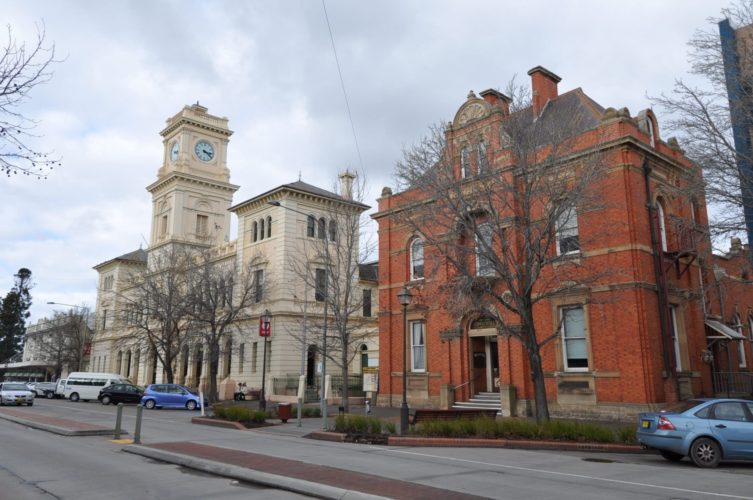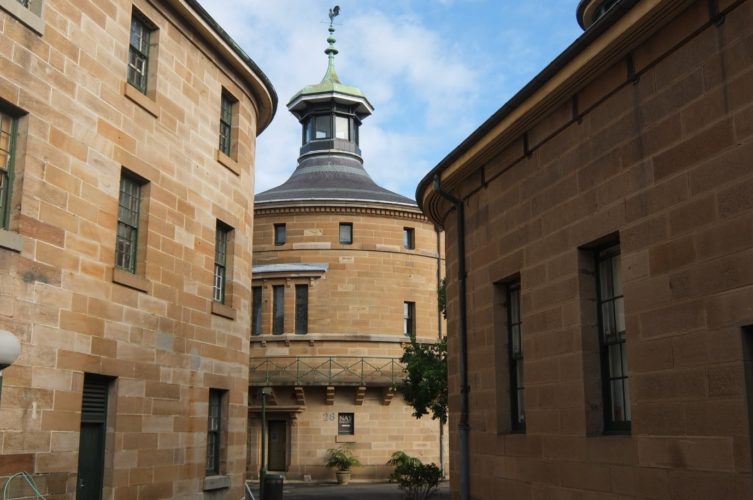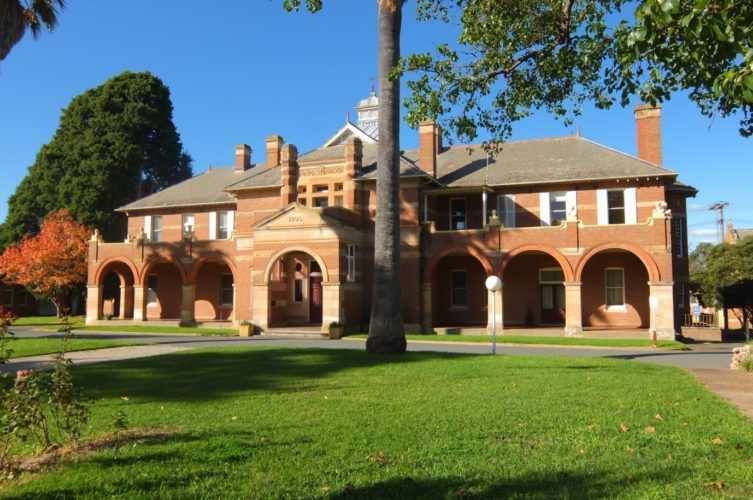Professional Associations
There is a multiplicity of questions related to heritage management in society today especially for heritage property consultants and cultural heritage advisors. Based on the concept of the ‘social construction of reality’, there has been a shift from a consideration of heritage as a fixed list to a socially open process.

Fig. 1 – Heritage buildings in the main street – Goulburn, NSW (Australia)
The recognition of heritage as ―that which expresses some indefinable but recognizable element which current societies value and wish to pass on to posterity, gives rise to the interaction of different actors (social sectors) based on different values which are conducted through different disciplinary fields (Shalaginova 2012).
In the sociological disciplines, culture is seen as a set of values, beliefs and symbols of expression and in anthropology, it is seen as the way of life of a society. In this regard, the conception of heritage as a social process is based on the revaluation by each generation and a conservation methodology to suit the production of future heritage.
Historically, there has been an evolution of the concept from the monument (as it was conceived in the 1960s and earlier) to a contemporary conception based on a cultural landscape as a stratified complex of signs, elements and tangible and intangible relations.
Today heritage designation and management rely on standardised cultural methodological approaches with a stated aim of improving social and cultural integration and providing input into the creation of collective spaces by multiple players and parties both official and unofficial.
Built cultural heritage (historic buildings, urban and rural sites, ethnological sites) is often strongly related to intangible cultural heritage (customs, activities and traditions) both in urban and rural environments and therefore participates in the construction of the identity of individuals and communities – therefore, there is a natural symbiosis between the people who created the now designated heritage buildings and the society in which they lived (Shalaginova 2012).

Fig. 2 – Heritage buildings in Darlinghurst Court House & Gaol – Darlinghurst, NSW (Australia)
Often the original use of a heritage building is no longer viable, thus giving rise to a need for strategies and approaches required to re-purpose such buildings (adaptive re-use). Material and immaterial cultural heritage is a carrier of social significance, so its richness and diversity contribute to the creation of social capital as well as the creation of a resourceful cultural capital (Throsby, 2001). Hence, there is an obvious need to protect such material and significance.
The value of cultural heritage is often closely linked with artistic value – giving rise to the notion of aesthetic significance in cultural heritage impact assessments which is one of five criteria identifying the cultural significance of an object, building or place. Cultural goods may be private, public or collective property and are characterized by externalities. Heritage is essentially a common good which makes it subject to market failure in economic terms given that in Australia roughly 80% of heritage-listed buildings is in private ownership. In this process, cultural and economic values influence one another, often resulting in negative consequences insofar as cultural heritage management systems are concerned because the private interest cannot necessarily be reconciled with the public interest.
The social value of heritage exists in an intrinsic way and cannot be represented by market price alone. The presence of cultural heritage contributes to stability of the urban (and human) society (maintenance of identity, unification, social stability). There is therefore an underlying psychological assurance offered to society by the way that a cultural landscape is defined, respected, protected and shared – being a common good. Therefore, conservation presents multiple paradoxes: the economic value of the conserved object may increase or decrease depending the commitment to conservation; conservation is considered to maximise the capability of choice for future generations. It involves minimising the consumption choices of the present generations.

Fig. 3 – The Kenmore Campus – Heritage building – Goulburn, NSW (Australia)
Heritage and conservation involve multiple stakeholders: private investors, residents, government, visitors, communities and the general public. Therefore, cultural heritage management systems need to be heterogeneous in character, scope and range. However, in the process of democratisation of the cultural process, a new globalised tourist-orientated approach to the cultural production of heritage has ensued. This is problematic because it tends to reduce the heritage product to a spectacle. Increased tourist numbers tend to alienate and disrupt local communities because most of the available housing stock in those local communities is converted into expensive tourist accommodation and retail thus putting such places out of reach for locals. Venice is a classic case in point to the extent today that there are less that 40 local families residing in Venice today – the rest of the housing stock having been turned over to tourist accommodation.
On the other hand, deliberative democracy proposes citizen participation in public deliberation, participatory politics and civic self-governance i.e. returning the governance of towns, cities and villages to local communities and municipalities as opposed to being governed from distant central authorities. The former makes sense whereas the latter is always bound to fail. Cultural heritage management as a decentralised enterprise is good for local heritage and allows local communities to monitor and tax tourism sufficiently to achieve a balance between visitor and local requirements.
Paul Rappoport – Heritage 21
3 May 2018
Reference:
Shalaginova, I. (2012) Understanding Heritage: A Constructivist Approach to Heritage Interpretation as a Mechanism for Understanding Heritage Sites, BTU Cottbus, PhD Thesis.
Throsby, D. (2001) Economics and culture, CUP
Related Articles

Heritage – are we losing the battle?
Enshrined in Goal 11 of the 2015 Sustainable Development Goals, the following aims are set out; Goal 11: Make cities…
Read more
Conservation Areas – Ambience, Form and Scale
Insofar as local councils in NSW are concerned, the general objectives in a residential conservation area typically, are to conserve…
Read more
5 top things to know about heritage design
To all heritage architects/ consultants/ advisors/ builders/ planners/ managers and owners out there - there are five cardinal principles that…
Read more
Tensions in Cultural Heritage Tourism
What is the relationship between cultural heritage tourism, the community and heritage places in any given locality? Which comes first,…
Read more

Need help getting started?
Check out our guides.

Complete the form below to contact us today.








